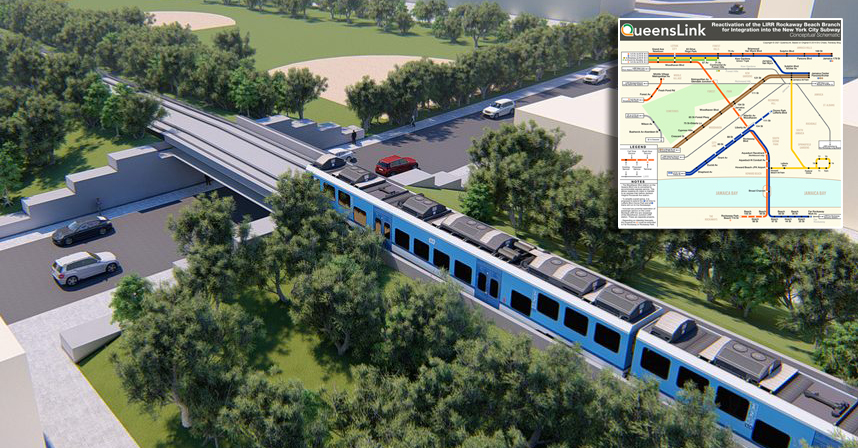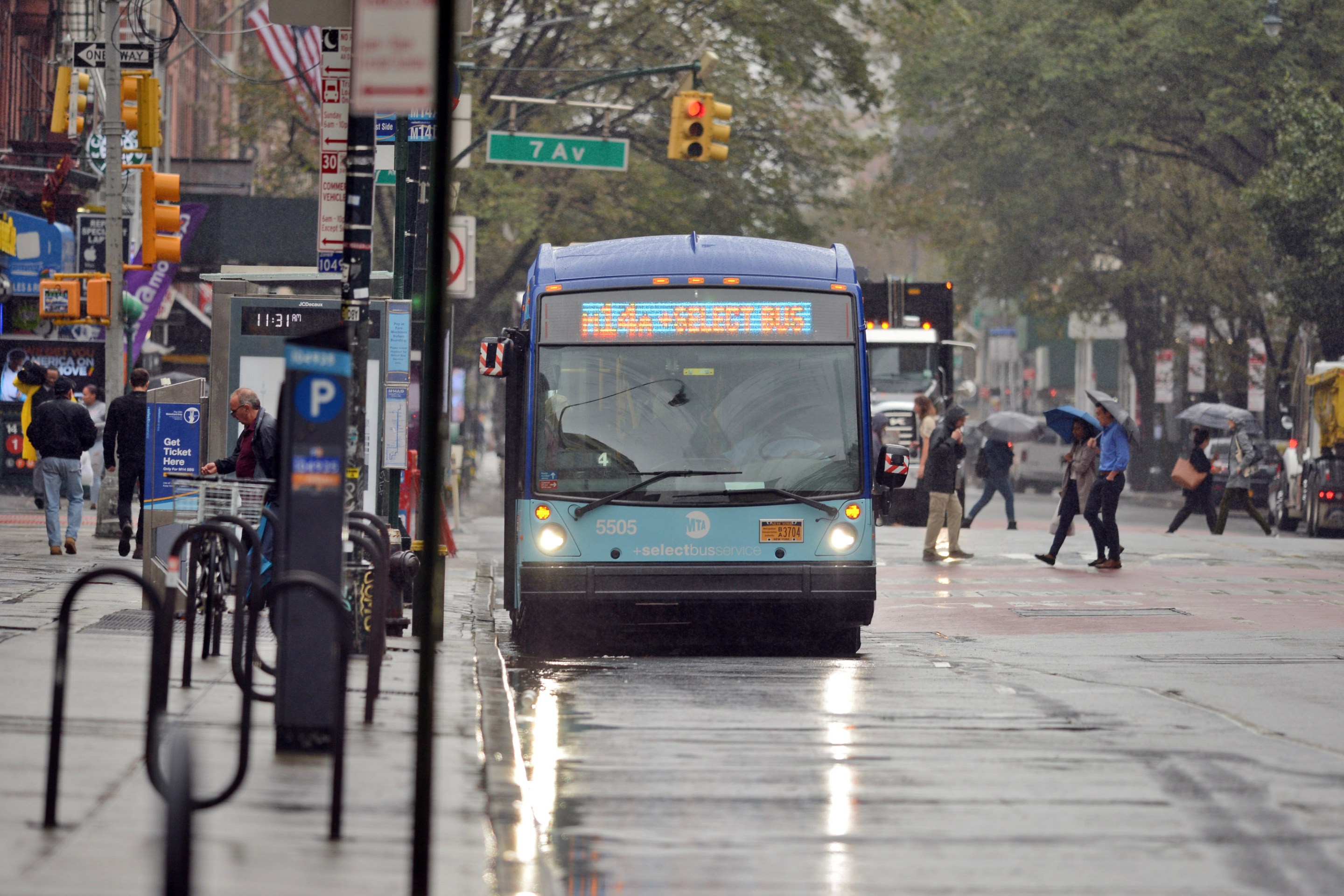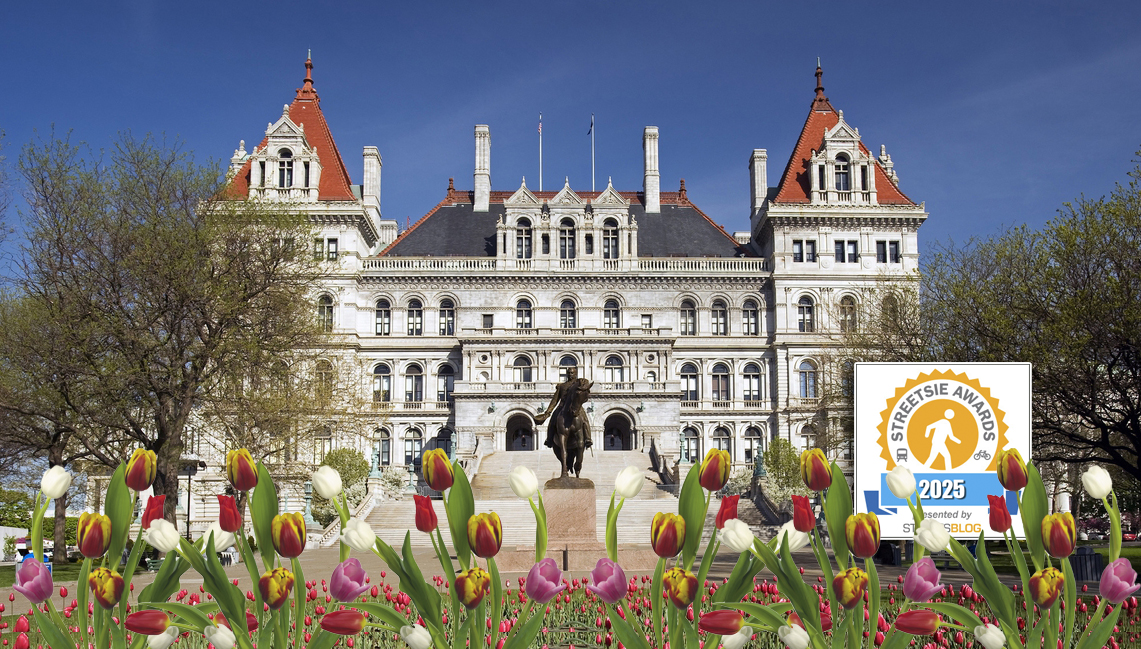Streetsblog Capitol Hill is pleased to publish this guest post from Deron Lovaas, Federal Transportation Policy Director for NRDC.
The President got pulses racing in the transportation world with stirring speeches about infrastructure investment this past Labor Day and Columbus Day. And his economic advisers recently put out a thoughtful report [PDF] making the case for investing now, while building costs are low and so much labor is available in construction. Now is the time for the President to make a strong pitch to Congress and more importantly to the American public in his State of the Union. This is what I would say if I were writing the speech President Obama will give on Tuesday.
**********************************************
We face a challenge in this country: Our transportation infrastructure policy is broken and it is going broke.
More than fifty years ago, Republican President Dwight Eisenhower worked with legislative leaders including Democratic Senator Al Gore, Sr. on a visionary transportation law: The National Interstate and Defense Highways Act. This launched the construction of a world-class highway system that drove prosperity in the 20th century and now criss-crosses the nation. Thirty-five years later, Republican President George H. W. Bush worked with Democratic Senator Daniel Patrick Moynihan and Representative Glenn Anderson to pass the Intermodal Surface Transportation Efficiency Act, reforming and updating Eisenhower’s vision to address America’s changing transportation needs.
Now is the time to honor that bipartisan legacy by building infrastructure that gives us a competitive edge in the 21st century.
But we’re not there yet – far from it.
The last transportation law expired more than a year ago. This is the bill that included the infamous “bridge to nowhere” earmark, and it is emblematic of government waste. We did a better job with investments in the recovery act, which had clear objectives, were merit-based and transparent to the public on the recovery.gov web site and elsewhere. Now we need to expand these features to the whole transportation program, so it is defined by clear outcomes and driven by performance. It must be transparent so the American people can get under the hood and hold us accountable.
How do we get there? We need to get back to basics.
First of all, no more earmarks. The public has lost faith in this program as the number of earmarks has spiraled out of control. Now, some have pointed out that they make up a small percentage of spending in the transportation bill, which may be true. But they are a symbol of all that is wrong with Washington – pork-barrel, wasteful spending.
Second, we need to lay the groundwork for a competitive 21st century transportation system. There is clear evidence that we’re on the road to disaster: $80 billion in lost productivity and wasted fuel due to traffic congestion, a ballooning trade deficit driven by gasoline and oil, and household transportation costs in excess of food for many families.
Instead, Americans want us to repair crumbling roads. Americans want high-speed rail links between growing metropolitan areas. And Americans want more transportation options, from bus rapid transit to new bicycle path networks in our cities. Delivering these results to the public will reduce the cost of living, improve quality of life, and lift the whole economy now and in the future.
We can do it if we slash the number of programs and simplify them to focus on achieving our shared national objectives. For example, one program should focus on bringing everything we’ve built – all of our roads, rails, and runways into top-notch condition. One should make traffic flow more smoothly and surely by linking all the ways of getting around. When a traveler walks out of a train station she should be able to drive, or take a bus, or take a cab, or even bike or walk conveniently. And commuters should be able to use the latest technology like apps on an iPhone with real-time information about traffic or train schedules.
Third, we need a program to invest real capital in new infrastructure. I know this a moment of belt-tightening on Capitol Hill, and there are good reasons to restrict spending. But these are crucial investments that will make America stronger and more competitive no matter how much some in Congress turn a blind eye to crumbling roads and falling bridges. We need to lay new asphalt and new steel rails, and we need to get started now.
And there is a way to leverage our limited resources, a way that has a proven track record around the world. The United States has helped finance infrastructure improvements around the world with the help of the private sector through special banks. The World Bank, which we helped create after World War II, has invested in projects around the world, and in the 1980s began mobilizing private sector money with innovative partnerships. Now it’s time to use that model right here at home. Doing this can multiply a federal investment several-fold.
This is why I propose the creation of an infrastructure bank. This bank will make grants and loans to jurisdictions across the country so they can work with companies to build the roads and rail we need to excel economically. The projects will be chosen carefully, based on results and outcomes. Will they boost economic growth? Will they increase energy independence? Will they save consumers money and increase quality of life? The projects that pass muster should move forward, and contractors should be held accountable for getting the job done.
The bank needs some seed capital to get started. I propose we do that by removing unneeded subsidies and tax breaks for the oil and gas industry. This industry is plenty profitable as is, and doesn’t need taxpayer help. That money should go to build a world-class 21st-century transportation system.
As I’ve said before, as we work to get the economy moving and employment up in the short run we need to keep our eye on the long haul. Building and maintaining a world-class web of roads, rail and runways will lift economic growth in a sustained way. I look forward to working with leaders of both parties to get the job done.






